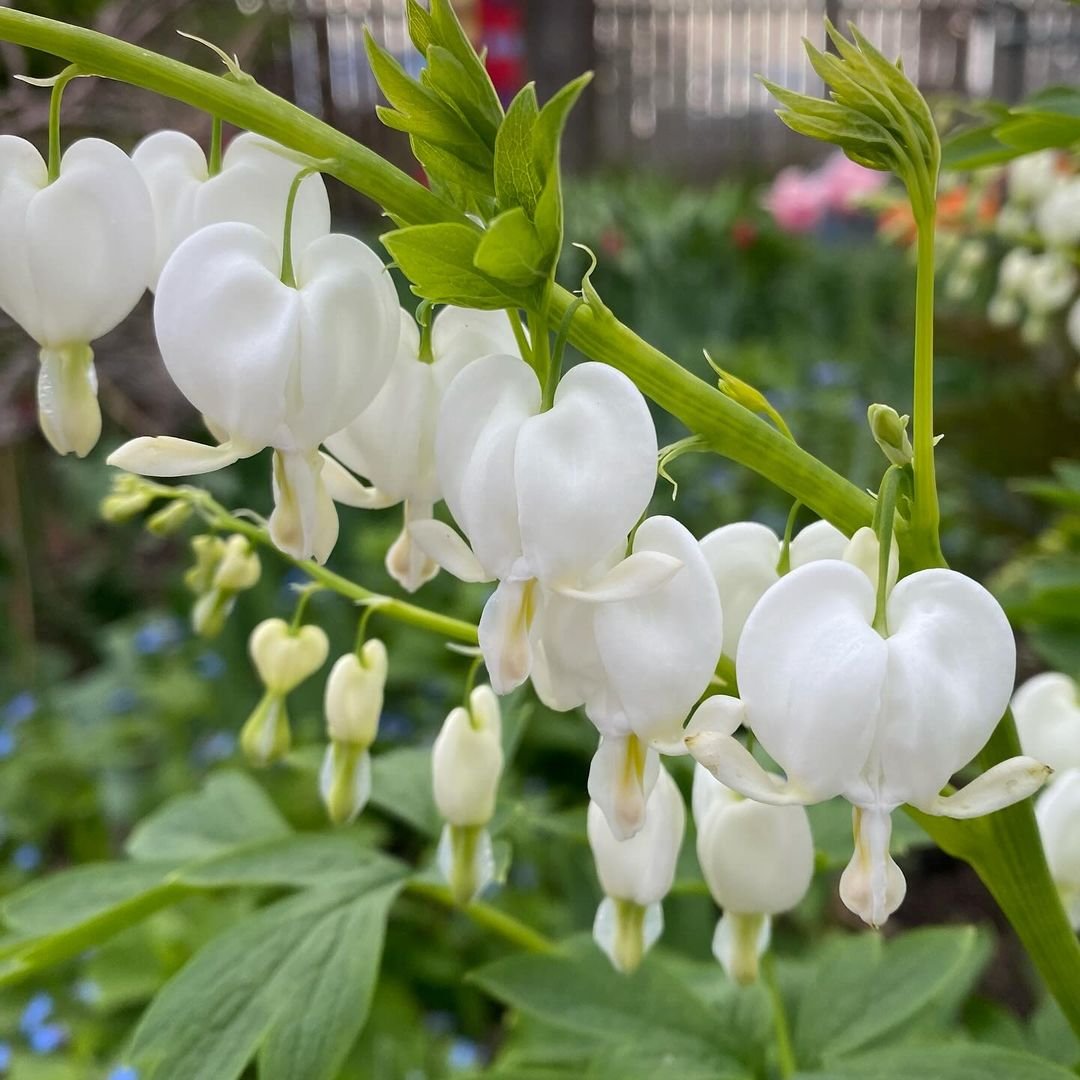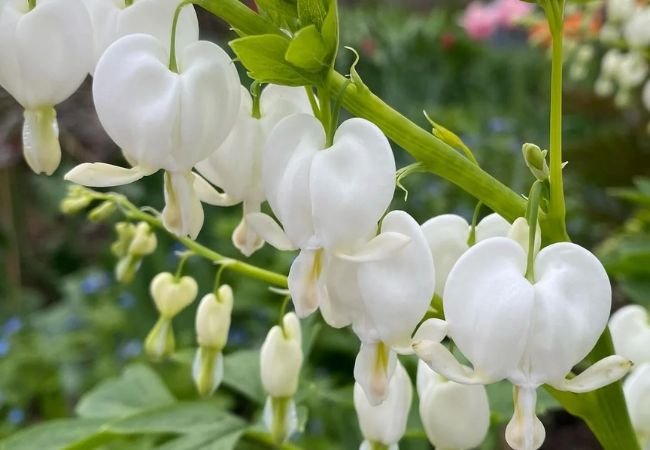Learn about Bleeding Hearts flowers, how to grow them and care tips. Discover why these unique, heart-shaped blooms are perfect for shade gardens and how to keep them healthy all season long.
Bleeding Hearts flowers are beautiful plants that many gardeners love. These flowers look like tiny hearts with a drop at the bottom, which is why they’re called “Bleeding Hearts.” Let’s learn more about these pretty flowers and how to grow them in your garden.
Here’s an information chart for Bleeding Heart flowers (Dicentra spectabilis):
| Aspect | Details |
|---|---|
| Botanical Name | Dicentra spectabilis |
| Common Name | Bleeding Heart |
| Plant Type | Perennial |
| Hardiness Zone | Zones 3-9 |
| Sun Exposure | Partial shade to full shade |
| Soil Type | Well-drained, fertile, moist |
| Watering | Regular, keep soil consistently moist |
| Growth Habit | Clumping, arching stems |
| Height/Spread | 1-3 feet tall, 1-3 feet wide |
| Special Features | Heart-shaped flowers in pink, red, or white; attractive, fern-like foliage; blooms in spring to early summer; deer-resistant |
What Are Bleeding Heart Flowers?

Bleeding Heart flowers come from the Dicentra family of plants. Their scientific name is Lamprocapnos spectabilis, but most people just call them Bleeding Hearts. These flowers are native to parts of Asia, but they grow well in many places in the United States too.
How Bleeding Heart Flowers Look
- Shape: The flowers look like heart-shaped lockets with a small drop at the bottom.
- Colors: They usually come in pink and white, but some types can be red or yellow.
- Size: Each flower is about 1 inch long, and the whole plant can grow up to 3 feet tall.
- Leaves: The leaves are green and look a bit like ferns.
When Do Bleeding Hearts Bloom?
Bleeding Hearts usually bloom in spring and early summer. They start flowering when the weather gets warmer, usually around April or May. The flowers can last for several weeks if the conditions are right.
Growing Bleeding Heart Flowers
If you want to grow Bleeding Hearts in your garden, here are some tips:
- Where to Plant: Choose a spot with partial shade. Bleeding Hearts like cool, moist areas.
- Soil: Use rich, well-draining soil. You can add compost to make the soil better.
- Watering: Keep the soil moist but not too wet. Water regularly, especially during dry spells.
- Fertilizer: Feed your plants with a balanced fertilizer in spring when they start growing.
- Winter Care: In colder areas, cover the plant with mulch to protect it during winter.
Caring for Bleeding Heart Plants
Taking care of Bleeding Hearts is pretty easy. Here are some things to remember:
- Pruning: After the flowers die, you can cut back the stems to keep the plant looking neat.
- Dividing: Every few years, you can dig up and divide the plant to make new ones.
- Pests: Watch out for slugs and snails, which like to eat Bleeding Hearts.
Using Bleeding Hearts in Your Garden
Bleeding Hearts look great in many garden styles. Here are some ideas:
- Woodland Gardens: Plant them with ferns and hostas for a natural look.
- Shade Gardens: They work well with other shade-loving plants.
- Borders: Use them at the front of flower beds for a pretty edge.
Remember, Bleeding Hearts go dormant (stop growing) in summer. You can plant other flowers nearby to fill in when they’re done blooming.
Are Bleeding Hearts Safe?
While Bleeding Hearts are beautiful, it’s important to know that all parts of the plant are poisonous if eaten. Keep them away from kids and pets who might try to eat them.
Enjoying Your Bleeding Hearts
Bleeding Heart flowers are a lovely addition to any garden. With their unique shape and pretty colors, they’re sure to catch everyone’s eye. By following these simple tips, you can grow healthy Bleeding Hearts and enjoy their beauty year after year.
For more gardening tips and plant care guides, visit usagardenhub.com.







2 Comments on “Growing Bleeding Hearts : A Guide to Charming Garden Gems”